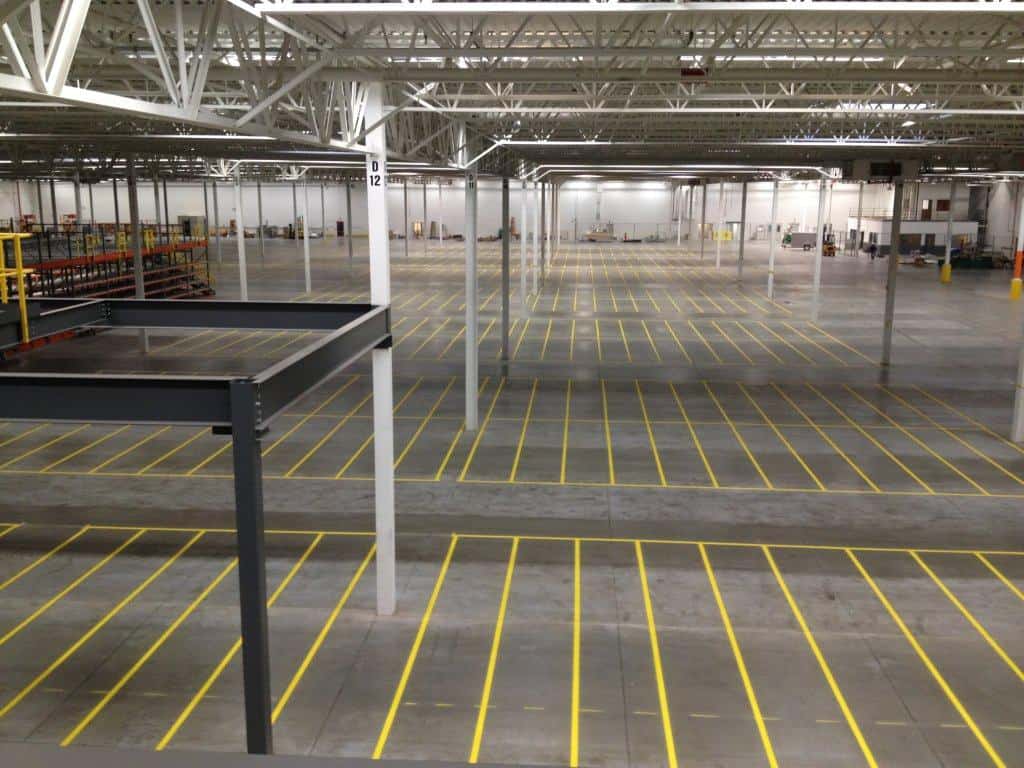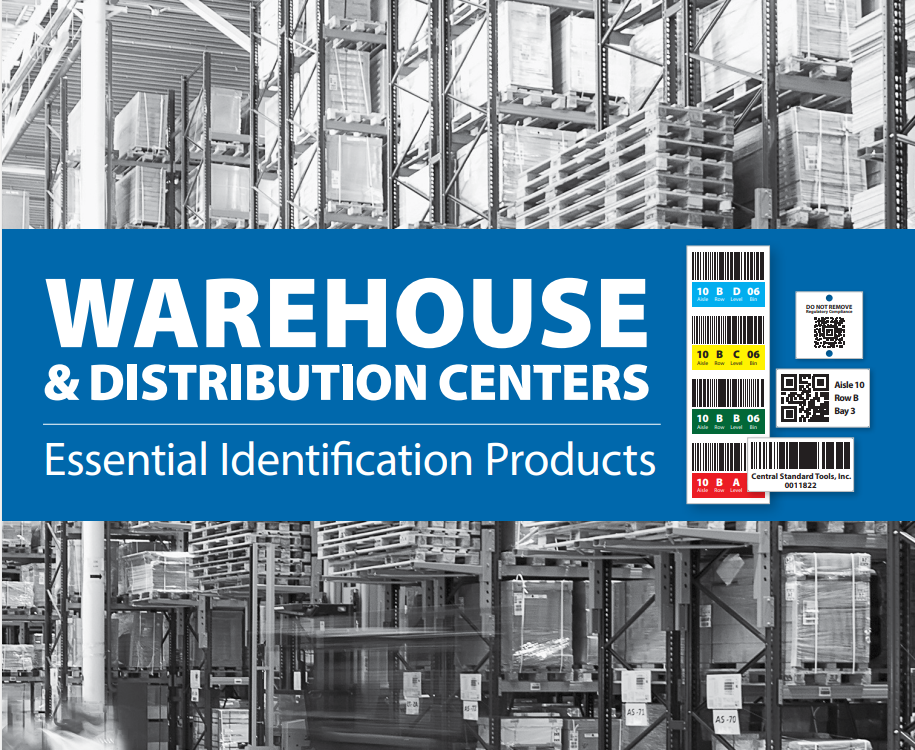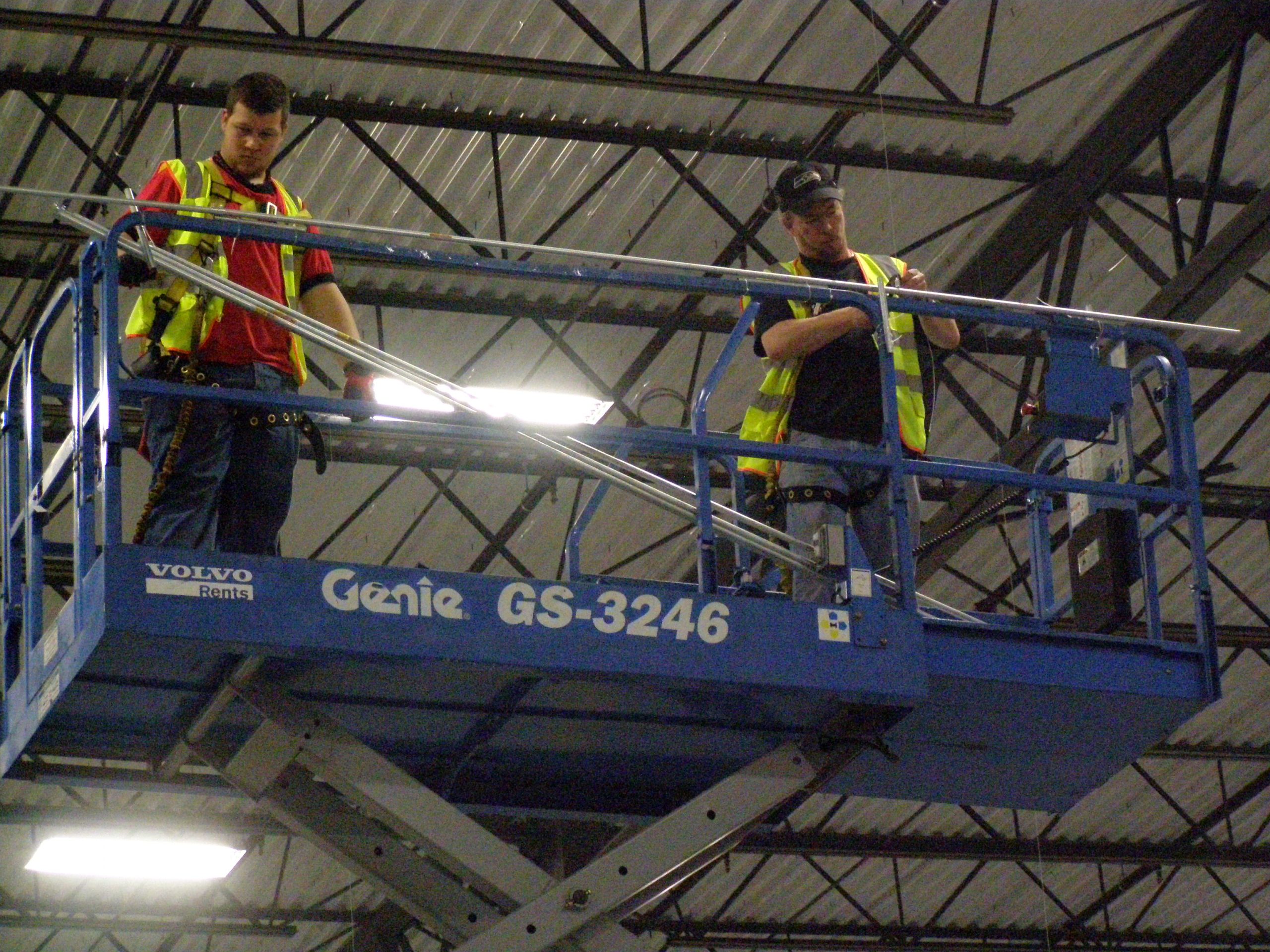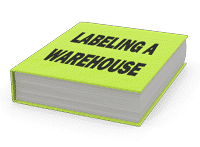Warehouses play a crucial role in the modern supply chain. If optimized, they can facilitate streamlined operations, not to mention impressive cost savings and customer satisfaction.
This takes meticulous planning, however, so many otherwise promising organizations find themselves struggling with nonsensical layouts, cluttered aisles, and general inefficiency. Thankfully, even modest adjustments can make a world of difference.
Warehouse Organization & Efficiency Tips
There‘s no denying the complications of warehouse design. Every detail must be considered to give your enterprise a competitive edge.
To help, we’ve compiled a variety of warehouse organization tips that should boost your facility‘s efficiency:
Develop a Proper Warehouse Layout
Every effective warehouse workflow begins with a strategically developed layout. Mistakes that appear minor at this stage could have huge implications later on.
Start by identifying primary goals and challenges for your warehouse space. Use schematics to create a visual representation of the available space, plus accurate measurements of the existing area and any equipment or shelving systems that might be added. Developing a floor plan before making changes can help ensure you’re using all of the available space.
Vertical Space
As you plan your facility’s layout, don’t forget about vertical space. It doesn’t matter how wonderfully the floor area is organized if you waste the vast amount of space that lies above your pallets and warehouse racking system. Of course, you’ll need to balance vertically-oriented storage with a picking process that provides easy access to all SKUs.
Clear, Consistent Warehouse Labeling
Barcode labels play an outsized role in warehouse operations. The barcodes themselves must be durable, not to mention visible for easy scanning. Their locations on pallets should be consistent so that there is never any doubt as to where or how scanning should occur. When in doubt, label everything — but also develop a standardized method that makes the most of every label.
Organize Aisles and Areas in a Logical Way
An organized warehouse can take many forms, depending on the types and numbers of SKUs. Choose a method that makes sense for your business.
Items are often sorted by size or color, but many enterprises emphasize ABC analysis. Under this approach, products are prioritized according to their turnover rate and related profit margins. A items are the best-selling (and therefore, most profitable) products, while turnover for B or C items may be moderate or low.
Helpful Signage
No matter how thoroughly your employees are trained, they will need regular reminders. Warehouses are simply too vast and too complicated for workers to be expected to recall all locations or instructions on their own.
Whether used for inventory identification or as safety warnings, strategic signage ensures that workers are always in the loop. Key applications for warehouse signage include:
- Safety signs. Designed to comply with OSHA standards or otherwise keep employees abreast of hazardous circumstances, safety signs can be attached to walls, racks, or ceilings. They may remind workers to use personal protective equipment (PPE) or let them know which areas are only accessible to authorized personnel.
- Traffic signs. Meant to promote both safety and efficiency, these signs direct the flow of traffic, including forklifts, trucks near loading docks, and more.
- Workflow reminders. From highlighting 5S practices to explaining Six Sigma, signs provide instant reminders of the protocol needed to maintain peak efficiency and accuracy.
Floor Markings
Few visual cues are easier to understand than floor markings, which provide instant indication of where workers and equipment are supposed to travel — and how they should interact with other people or machines. These should be color-coded to ensure that workers understand the markings’ core functions as quickly and thoroughly as possible.
For example: yellow and black convey danger, so employees will instinctively be wary in the hazardous areas marked by this color combination. Pay attention to OSHA guidance, which is important from both a compliance and efficiency standpoint.
Other colors can be assigned to designate the flow of traffic or highlight where important equipment should be stored. Develop a system to be used consistently so that employees know exactly what specific floor colors or markings mean.
Automation
Given the complications of the current labor market, it should come as little surprise that automation is an increasingly vital piece of the warehouse management puzzle. Automated solutions that promote an efficient warehouse include:
- Automated guided vehicles (AGVs). Vehicles that navigate warehouses without onboard operators are known as AGVs. Depending on their configuration, they may follow marked lines or wires — or they can even use lasers or radio waves to get around.
- Autonomous mobile robots (AMVs). While AMVs are similar to AGVs in several respects, they hold a key distinction that makes them extra valuable in the modern warehouse: they’re fully autonomous, so they don’t need established paths or other guidance to avoid obstacles.
- Sortation systems. Capable of quickly and accurately sorting through various products, today’s automated systems take many forms. From overhead trolleys to push bars and even gravity chutes, many strategic conveyances can be used to divert products.
- Automated storage and retrieval systems (AS/RS). Capable of following established routes and swiftly retrieving products, AS/RS limit the need for manual picking and packing. They promote higher storage density and can be used to optimize vertical space.
Utilize Bins & Totes
Among the most affordable strategies for optimizing your warehouse, bins and totes enhance stackable storage. These versatile solutions can be used for pallet racking, static shelves, or, in some cases, AS/RS setups. Their durability is unrivaled, so they can be used to store a variety of sensitive items. Dividers can be built into these solutions to provide even more targeted storage areas — especially when striving to keep kitted items near one another.
Put Cleaning Standards into Place
Clutter is a chief source of inefficiency in the modern warehouse environment. While proper layout and labeling can prevent clutter from forming in the first place, it’s also important to develop a strategy for how you’ll deal with any messiness that does arise.
Cleaning, like layout, should be standardized to ensure that it’s carried out regularly — and that high expectations are met. To begin, cleaning materials should be easy to locate and consistently available so that workers can tidy as they go. This means placing trash receptacles throughout the facility, as well as clearly identified cleaning stations that include all essential items.
This is another great opportunity for implementing automation. Instead of relying exclusively on employees to keep the warehouse clean, your business can make the most of autonomous cleaning robots.
Use a Centralized Inventory Management Software
Separate systems are available to handle every conceivable component of warehouse management. Unfortunately, these solutions can ultimately prove just as inefficient as the concerns they purport to resolve. Over time, it becomes too difficult for human professionals — no matter how highly trained — to keep so many technological solutions straight.
Thankfully, there’s no need for humans to handle all this alone. Your inventory management system can bring clarity to the myriad of technological strategies that you may struggle to understand. Centralized systems ensure that various solutions run effectively together, rather than succumbing to data silos.
Implement a Tried & True Method
While the idea of starting fresh may seem exciting, there’s no need to scrap all aspects of your previous warehouse system. Although your prior approach may have suffered significant weaknesses, it almost certainly wasn’t all bad. In fact, there may be significant strengths worth preserving.
Now that you know which aspects of your operation are less than desirable, you can also pinpoint the components that worked well in the past. Find creative ways to integrate these tried-and-true methods into your revamped operation.
Regularly Assess & Adjust
You’ve done the hard work of adjusting your warehouse workflows — and you’re beginning to reap the rewards. It’s tempting to rest easy and enjoy the fruits of your labor, but remember: this job is never fully complete. As your industry evolves, you need to continue making adjustments to ensure that your approach remains relevant.
Consistent oversight will help you discern when or how a previously beneficial approach no longer serves your best interests. Look to real-time data to provide the immediate insights you need.
Beyond this, it’s essential that you remain up-to-date on the latest technological developments. Right now, there are new systems and devices in the works that can deliver efficiencies beyond anything we can currently conceive. Adopting these solutions early on could provide a critical edge in a fast-paced and highly competitive market.
Consider Hiring a Third Party for Help
If the many suggestions outlined above have you feeling overwhelmed, don’t fret. Warehouse organization may seem complex at the outset, but remember: you don’t have to handle it all on your own. Consider hiring third-party experts, who can bring an outside perspective to your operation — and help you determine where key weaknesses lie.
Getting Started with Warehousing Improvements
Struggling to get started with warehouse optimization initiatives? The team at DASKO LABEL can help. From floor markings to warehouse signs, we provide powerful insight into the simple, but crucial solutions that make your warehouse as safe and efficient as possible.
An organized, efficient facility is well within reach. Contact us today to learn more about the wide range of labeling solutions that could benefit your organization.









